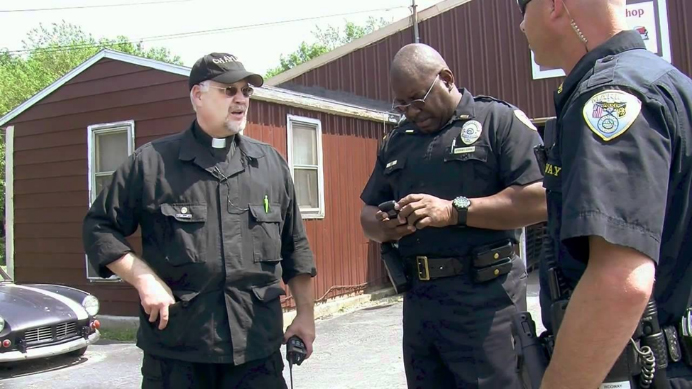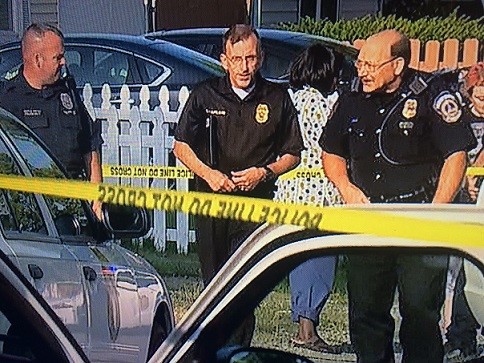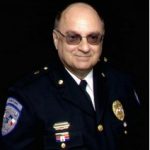Chaplains Are Like a Box of Chocolates
By Chaplain LTC (RET) David J. Fair, PhD, DMin, CTS, FAIS
*This is an article from the Spring 2022 issue of Combat Stress
“All Chaplains are unique – and come with a variety of fillings”
The ambulance pulls into the ER and a critical patient is wheeled into the emergency room. A team of trauma physicians hovers around the lifeless figure. The admitting desk sees the situation and pages the Hospital Chaplain. The Chaplain quickly responds and works with the arriving family of the victim. Information is carried back and forth to those in the waiting area. The code is called.
Now the Chaplain must break the news to the family. He or she stays with the family while the doctors and nurses and hospital provide documents for the family to sign, ask the family where they would like their loved one to be sent (which funeral home), etc., all the while the chaplain is simply present. He or she may be guiding the shocked family through some of the process, but that presence is felt. In First Responder, and more specifically Law Enforcement Chaplaincy, this is known as “ministry of presence.” Simply being there with a family as they experience the worst news of their lives can have a redeeming impact on them. No words need be said as the family slowly processes that their loved one is gone. Finally, the Chaplain returns home to a cold dinner to which he or she was just getting ready to eat when the call to come to the hospital ER was received.
Who is this Chaplain? More correctly, what is this Chaplain?
Is it a Professional Chaplain, Community Clergy? Both? Much is said today about the “Professional Paid Staff Chaplain.”; two degrees and CPE (continuing pastoral education) …ego wall in the office, parking space at the door.
Then there are the community clergy. Those local ministers who “pastor” churches, teach at universities, laity with the blessing of their faith tradition. They visit the sick, say prayers, and conduct funerals. They may not have any training in Chaplaincy, but as the pastor for the family, they may be of comfort simply because it is the family’s pastor.
Finally, there is a third Chaplain. The professional credentialed volunteer chaplain. The vast majority, 90-95 percent of all First Responder Chaplains are volunteer and serve public safety personnel and their families (police, fire, EMS). This is the bi-vocational Chaplain who is as we spoke of earlier, may be splitting time between several parishes.
All these Chaplains – paid Hospital Staff Chaplain, Clergy of the Family, but especially the Professional Credentialed Volunteer First Responder Chaplain, in many cases, go where angels fear to tread. Usually, Professional Credentialed Volunteer Chaplains are found in smaller facilities or in rural communities, hundreds of miles from metropolitan areas, in facilities with no Chaplain or spiritual care budget. They may not even have booklets or pamphlets available about grief or what to do when a loved one dies.
These dedicated individuals who felt that “call within a call” to serve as a Professional Credentialed Volunteer First Responder Chaplain have spent countless hours in both educational settings and training seminars, spending their own money and their vacation time to quality themselves to serve in a no man’s land. Even shadowing more senior Volunteer First Responder Chaplains, they have learned techniques that might not even be taught in classes, but from which they have learned from experience. Chaplain Mark Bardsley, 2020 Immediate Past President of ICPC and Staff Chaplain for Marion Police Department, Marion, Indiana.
Chaplain Mark Bardsley, 2020 Immediate Past President of ICPC and Staff Chaplain for Marion Police Department, Marion, Indiana.
These men and women have filled the needs of hospitals and hospices alike and brought professional pastoral care and comfort to thousands. Many have been serving as Professional Volunteer First Responder Chaplains for years, availing themselves of teleconferences, books, papers, videos, and the internet; yet in some circles these valiant servants are deemed less than “professional.” It is not uncommon for those chaplains in a hospital who may have had CPE and their Board-Certified Chaplain (BCC) credential to initially look at the Volunteer First Responder Chaplain as a novice.
After all, they are not full time. They may have substituted formal CPE by working with an experienced Chaplain, arm in arm. They may not have been able to meet the specific legal requirements of certain certifications from national associations, yet they have complied many times over in spirit. They have the same “call within a call” possessed by Hospital Chaplains. In smaller medical settings the term “Professional Chaplain” simply means the person is usually making their living through the Chaplaincy on a full-time basis. It is their chosen profession.
What is not realized is that Hospital Chaplains and Volunteer First Responder Chaplains both work from different models. For Hospital Chaplains, there is slower process to help the patient with their spiritual needs. A Professional Credential Volunteer First Responder Chaplain is often called when a crisis occurs and Crisis Intervention tools must be utilized in addition to Emotional and Spiritual Care. Both are qualified Chaplains in their own right.
Finally, there is the Paid Staff Chaplain employed by police departments. They may be charged with the official ceremonial duties for the department when an Invocation or Benediction is needed. They may work with the FOP Team to plan for the funeral of a fallen officer in their capacity as the Paid Staff Chaplain. They, too, will have gone through the same professional credentialing and training as the volunteers. They are expected to recruit, train, schedule and manage to meet the needs of a police department with 1,700 officers. There is no difference.
Today’s Chaplain cannot be confined to one meaning, one mode of operation, one training track. Since 9/11, chaplaincy has branched out horizontally, developing tools and skill sets that are unique to each specialized setting, whether in a hospital, a hospice, the military, a company (corporate chaplain), a jail or penitentiary, or a First Responder Chaplain (serving police departments, fire departments, EMS departments, or on a Disaster Team). To the officers, the Volunteer First Responder Chaplain who is trained and credentialed, is their chaplain…. professionally and in every way.
No longer can we, as Volunteer Chaplains, “muddle” our way through being chaplains by only being a “licensed” or “ordained” clergyperson. Training, mentoring, and all these tools and techniques can help us understand the difference between being a pastor, priest, rabbi or imam with our church, parish, temple or mosque. Then there is the quick paced Crisis Intervention Model, under which most First Responder Chaplains are often called. Volunteer First Responder Chaplains are no less professional than the paid staff chaplain. We have just chosen a different route to serve in a specialized setting (such as the First Responder/Public Safety Arena), which requires unique specialized training. Fr Jeff Wolfe when serving as Chaplain for the Indianapolis Metropolitan Police Department, Indianapolis, IN
Fr Jeff Wolfe when serving as Chaplain for the Indianapolis Metropolitan Police Department, Indianapolis, IN
We must honor the enormous commitment and dedication of the chaplaincy for all that they bring to the table of spirituality and support for such deserving populations of first responders.
ABOUT THE AUTHOR

Chaplain LTC (Ret) David J. Fair, PhD, DMin, CTS, FAIS, has served in law enforcement chaplaincy for over 30 years and has been and continues to be an innovative leader in police chaplaincy, crisis intervention and in building relationships. He is President of ChaplainUSA, a nonprofit corporation providing training and education to officers and chaplains. Fair is a veteran law enforcement officer, and a former reserve deputy sheriff.
Fair served with the Texas Military Forces, TXSG-HQ, as a Lieutenant Colonel (LTC), and was chaplain for the 111 EN BN for two years. He served with the Standing Joint Interagency Task Force (STIATF-TX). Fair earned his Military Emergency Management Specialist (MEMS) designation.
Chaplain Fair has served as a briefer on Operational and Combat Stress for the Camp Bowie Training Center. He was deployed on state active duty for numerous hurricanes and served with Operation Lone Star. He is the recipient of the Texas Adjutant General’s Individual Award Ribbon for “Meritorious Conduct” in performance of outstanding service during Hurricane Dolly, response, and recovery. He was certified in Homeland Security at Level V (CHS-V) and carried certification in Disaster Preparedness and Sensitive Security Information. Fair was a presenter for the Board of Certification in Homeland Security, and developed the course, Terrorism Trauma Syndrome. Chaplain Fair served on the Editorial Advisory Board for Inside Homeland Security Magazine where he authored a regular Chaplain’s Column.
Dr. Fair is a member of the Board of Professional Advisors for the National Center for Crisis Management (NC-CM)/ American Academy of Experts in Traumatic Stress (AAETS). He holds their Board Certifications as Expert in Traumatic Stress, School Crisis Response, Crisis Chaplaincy and Forensic Traumatology. Fair is a past member of the Ethics and Professional Policy Committee of the American College of Medical Quality. A longtime emergency medical services technician and volunteer firefighter, Fair served on the City of Brownwood (TX) Emergency Services District Committee, as well as the police and fire committee.
Dr. Fair is an ordained minister and holds a PhD is Pastoral Counseling and Psychology from Bethel Bible College and Seminary as well as a doctorate in Clinical Christian Counseling from Central Christian University. He was on the facility of Wayne E. Oates Institute, a former professor at Bethel Bible College and Seminary, and former member of the Commission on Forensic Education.
For over 20 years, Dr. Fair served as a member of the Brownwood City Council and is a former Municipal Judge and Justice of the Peace. Dr. Fair is Chaplain Emeritus of the Brownwood Police Department having recently retired after 20 years of service. He is also retired from Brownwood Regional Medical Center (now Hendrick Brownwood) as Chaplain following 25 years of service. He was also a volunteer Chaplain for the Texas Department of Public Safety. Fair is past CEO of Crisis Response Chaplain Services and is CEO of the Homeland Crisis Institute.
During police chaplaincy and military service, Dr. Fair was deployed to New York following 911, to east Texas for the Space Shuttle Columbia Disaster, and to Hurricanes Katrina, Rita, Dolly, Gustav, and Ike. Dave has written dozens of articles concerning chaplaincy and trauma as well as authored a book, Mastering Law Enforcement Chaplaincy.
Combat Stress Magazine
Combat Stress magazine is written with our military Service Members, Veterans, first responders, and their families in mind. We want all of our members and guests to find contentment in their lives by learning about stress management and finding what works best for each of them. Stress is unavoidable and comes in many shapes and sizes. It can even be considered a part of who we are. Being in a state of peaceful happiness may seem like a lofty goal but harnessing your stress in a positive way makes it obtainable. Serving in the military or being a police officer, firefighter or paramedic brings unique challenges and some extraordinarily bad days. The American Institute of Stress is dedicated to helping you, our Heroes and their families, cope with and heal your mind and body from the stress associated with your careers and sacrifices.
